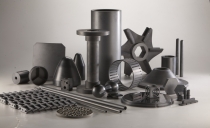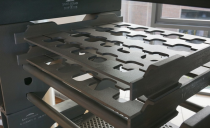Mullite
Ceramics Materials
Mullite or porcelainite is a rare silicate mineral formed during contact metamorphism of clay minerals. It can form two stoichiometric forms: 3Al2O32SiO2 or 2Al2O3 SiO2. Unusually, mullite has no charge-balancing cations present. As a result, there are three different aluminium sites: two distorted tetrahedral and one octahedral.
Mullite (porcelainite) can be found as a constituent mineral in a type of thermally-metamorphosed rock called porcellanite.
Porcelain Applications
Mullite is present in the form of needles in porcelain. It is produced during various melting and firing processes, and is used as a refractory material, because of its high melting point of 1,840 °C.
Mullite morphology is important for its application. In this case, there are two common morphologies for mullite. One is a platelet shape with low aspect ratio and the second is a needle shape with high aspect ratio. If the needle shape mullite can form in a ceramic body during sintering, it has an effect on both the mechanical and physical properties by increasing the mechanical strength and thermal shock resistance. The most important condition relates to ceramic chemical composition. If the silica and alumina ratio with low basic materials such as sodium and calcium is adjusted, the needle shape mullite forms at about 1,400 °C and the needles will interlock. This mechanical interlocking contributes to the high mechanical strength of porcelain.
Related Content
Specialty Ceramics
Saint-Gobain Performance Ceramics & Refractories’ extensive range of specialty ceramic products – ideal for use in the harsh environments typical in broad...
Systems for Kilns & Furnaces
Discover Saint-Gobain Performance Ceramics & Refractories’ comprehensive range of ceramic products and solutions - designed, developed, and manufactured...

